By: Karl Logge
Towards a fourfold digital weaver theory: notes on a past-future praxis
Keywords: Weird design, Weird digital, Weaver Theory, Speculative Fourfolding
Cyborg informatics, recrafting bodies / Artificial intelligence, C31 operations coding
Multiple databases, umbilical network / Breath engine, indestructible heart
…We are the first to program your future / We are the first of cyber- evolution
We are the first, we are the last…
— ‘The 1st’, X-Dream, 2004
What we’re gonna do right here is go back, way back, back into time.
When the only people that existed were troglodytes…cave men…
cave women…Neanderthal…troglodytes. Let’s take the average
cave man at home, listening to his stereo.
— ‘Troglodyte (Cave Man)’, The Jimmy Castor Bunch, 1972
open_access.direct: digital-fourfold
^Initiate: Opening up the digital weavescape^
On and Off.
Input / Output.
One, Zero.
Compute…
When did the digital begin? Does it begin with device or apparatus, the design of circuits or tapping at computer terminals? Is it numbers, the invention of zero, or the counting that counts? Is it the language of programming or the alphabetic grammata of writing[1]? Is it computation, signals sent and received or the pulse of electricity that gives the digital its presence? Is the digital media or medium, the message or the manage? Could it be that the digital is simply another way of naming a technological Rubicon, where we suddenly tipped into a so-called modern way of life?
To add to this, what does it mean to be digital? Is it calculating, coding, gaming, snapping selfies or sunsets, swiping left and right, checking out or checking in? Is it the act of negotiating a life amongst technical objects, swimming within data flows, charging, uploading, clicking? Writing up, clocking on or switching through nodal points? Is it getting the invite to virtual block-parties with our virtual, blocky meta-selves? Is the digital act separate from the digital process and the things we use to enact these processes? Or is there something more fundamental to the idea of the digital? What if we go back, way back… back into time and ask ourselves if perhaps we have been digital beings for longer than we care to remember? Perhaps, somewhere along the line, we merely got lost, disoriented, having dropped the thread that could lead us out of the labyrinth?
Over and Under.
One Naked, One Dressed.
Weave…
Once naked, so the story goes, those avatars of the first human souls were free and easy in the garden where everyone knew everything on a first-name basis. Then it all went pear-shaped and the first binary entered the equation: good…evil. For better or worse, forbidden fruit leaves quite the aftertaste, a bitter mix of exile and shame. And so, as the story continues, it’s been fig leaves over naughty bits ever since.
Still, you might say the tree of knowing stuff has its uses. At some point fig leaves swapped out for pelts, or deer gut, or twine or hemp or wool, silk, cotton and jute — each materialises another binary. Warp and weft begets cloth and dress, toga, tunic and trousers, and before you know it, the sails on ships open up new worlds taking us into this uncertain future.
Let’s say then, that for almost as long as we have been dressed (and probably well before) that we have long been working on a certain digital equation. This is based on passing lines, between other tightly stretched — over and under, under and over, over and over again. Let’s call this DIGITAL-0.
Access_portal.unfold: To continue reading this essay you can navigate the digital fourfold by clicking through each quadrant below.
BIO
An installation and live-art artist, redirective designer, undisciplined academic and irresponsible researcher-writer, and student of the Master Weaver Chira Vigo, Karl Logge holds a PhD in Design from Charles Sturt University and creates projects that focus on teaching the ancient art of weaving to children and young people. This includes works presented together with Marta Romani as part of the New European Bauhaus Festival in Brussels, the Nature, Art and Habitat Residency in Val Taleggio, the Earth Rising Festival at IMMA and BOOM! Festival in Portugal.
REFERENCES
[1] This is activated by Bernard Steigler’s work on digital ontologies and technologies of attention where he states: “Alphabetical vocalic writing, which appeared between the 8th and 7th Century B.C., allowed the constitution of a singular attentional process … ceaselessly reformed, deformed and transformed as the process of psychic and collective individuation ….If we want to analyse and understand the stakes of this transformation (insofar as this is possible), we must analyse what, as process of ‘grammatisation’, leads us from the appearance of the writing of grammata up to the digital apparatuses and the new attentional forms that they constitute. For these inaugurate a new process of psychic and collective individuation that emerges at the heart of what must be understood as a network society of planetary proportions.” Stiegler, Bernard. 2012. “Relational ecology and the digital pharmakon” in: Culture Machine Vol 13, 4-5.




